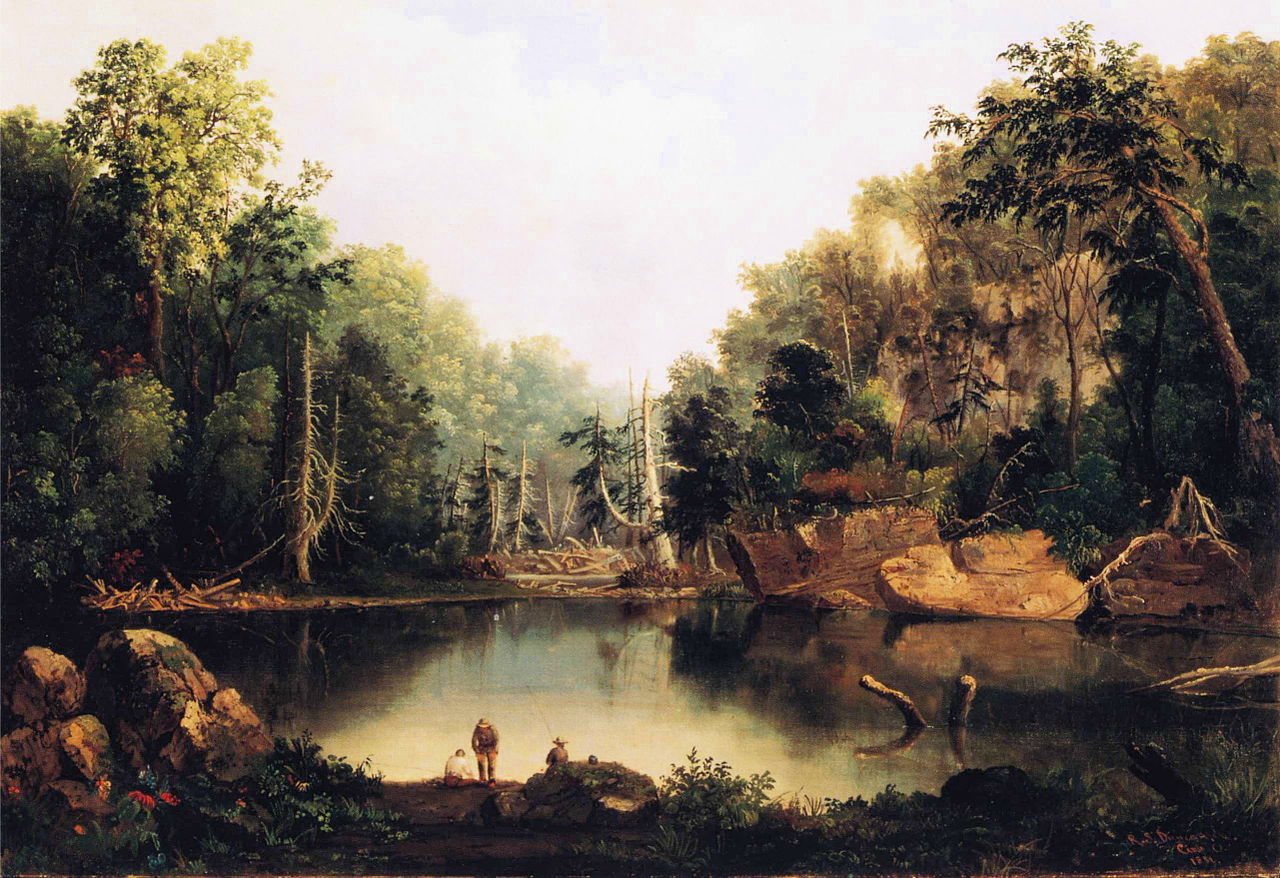Robert S. Duncanson, Vesuvius and Pompeii, 1870
Source: Wikimedia Commons
I now have just over a month left of my project to tweet a landscape a day for 2018. It is never possible to predict how many 'likes' these will get - obviously I feel they're all interesting or beautiful in one way or another. Possibly my least popular one this year, with just two 'likes' (one of which came from my mother!) was a Robert S. Duncanson landscape painting showing Vesuvius and Pompeii. This, despite the fact I posted it with the hashtag #BlackHistoryMonth... Clearly if anyone was looking for this hashtag during that particular month, they were not interested in my Duncanson painting. He may have been the first prominent African-American landscape artist, but his style of painting is perhaps too unfashionable to excite much buzz on social media. But his paintings are interesting in their own right - in my tweet I said that "in this view of Pompeii I particularly like that painting-within-a-painting, a large fresco resembling an outdoor cinema."
Robert S. Duncanson was born in 1821 in the state of New York. His grandfather was a freed slave from Virginia and his father lived there, until growing opposition to freed black men persuaded him to move north. The family settled in Michigan and then, as a young man, Robert Duncanson taught himself painting in Cincinnati, 'the Athens of the West'. His first significant landscape painting, Cliff Mine, Lake Superior (1848) was acquired by Charles Avery, one of several abolitionist patrons who bought his work. In 1853 he visited Europe and a year later he collaborated with the prominent African-American photographer James Presley Ball on an anti-slavery panoramic painting, Mammoth Pictorial Tour of the United States Comprising Views of the African Slave Trade. When the Civil War began, he moved to Canada and then Britain, where he was particularly impressed by the Scottish Highlands. He returned to America and died at the age of just 51, possibly due to the effects of lead poisoning. The view of Vesuvius and Pompeii is thus a late work, inspired by his travels almost twenty years earlier.
Robert S. Duncanson, Blue Hole, Flood Waters, Little Miami River, 1851
Until this year, Duncanson did not have a tombstone. However, it was good to come upon a report in the Detroit Free Press (via a JStor article last week), explaining that this is about to change.
'For more than a century, his body has remained in Monroe, about 40 miles south of Detroit, with nothing but grass growing over his grave. Now, a small foundation marks the site of his burial awaiting the arrival of a tombstone.
“No one has asked about him — not in my lifetime,” said Michael Huggins, 55, the manager of the Historic Woodland Cemetery for the past two decades, and the person who helped find the exact location of Duncanson’s burial plot.
[... Now] nearly a century and a half later, Monroe resident Dora Kelley is looking to rewrite a chapter of Duncanson’s life. Kelley worked with LeClair Monuments in Lambertville to design a sleek black granite tombstone for Duncanson complete with his full name, the year of his death and an etched version of his Ellen’s Isle painting from the DIA’s collection. Kelley also chose a quote from the late artist to grace the monument, which speaks to Duncanson’s unprecedented position as a freeborn artist in the era of slavery: “I have no color on the brain; all I have on the brain is paint.”
Robert S. Duncanson, Ellen's Isle, Loch Katrine, 1871







